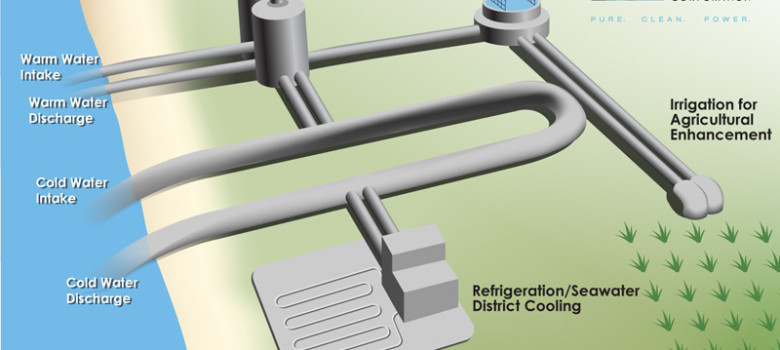
OTE Corporation Bahamas OTEC Power Plant
To be effective, companies such as OTE Corporation are bringing together both Ocean Thermal Energy Conversion (OTEC) and Seawater District Cooling (SDC) solutions, to leverage the benefits of the infrastructure that is put in place. OTE Corporation’s current plan is to construct the world’s first two commercially viable OTEC plants in the Bahamas which would be able to generate between 5-10MWs of electricity, 24/7. OTE Corporations unique capabilities in deepwater piping means that these types of facilities will be able to support energy generation of this size and also be both technologically and commercially viable. A Memorandum of Understanding (MoU) has been signed with the Bahamas Electricity Corporation (BEC) and a preliminary Power Purchasing Agreement (PPA) with a major Pacific utility company, which means this project is a few steps closer to getting the green light.
OTE Corporation Seawater District Cooling Solution
In parallel, OTE Corporation has been selected to construct the world’s largest deep ocean Seawater District Cooling (SDC) facility, which would bring about 80-90% saving in electricity usage for air-conditioning in this world famous luxury resort. The Energy Services Agreement is in place and once again the project is closer now to getting the green light to proceed.
OTEC Economic Feasibility
From a technological perspective, the more the component parts are improved means that from a economic perspective costs are able to be reduced. This then goes a long way to make OTEC solutions more economically feasible. For example, making sure that the heat exchanger has low corrosion levels means that repair and servicing costs fall and overall profitability levels of a plant will increase.
OTEC Environmental Impact
From an environmental perspective the build process will hinge on the piping infrastructure being put in place without interrupting local marine ecosystems. The piping system is buried deep in the ocean, which means it takes water that contains high nitrate concentrations, otherwise useful to support marine life. Also a 10m diameter pipe is needed to pump enough water to support a 100MW plant. This is why the infrastructure has to be created so it doesn’t have a detrimental effect on the environment around it, which would be counterintuitive to the principles behind OTEC and also defeat the purpose of this technology. Studies are taking place to look at the impact a plant would have on the marine life around it. 3D modelling for example has been able to project the area that will be affected by an OTEC power plant and nutrient extraction levels. These studies help companies like OTE Corporation work through improving the technological solutions to mitigate these impacts.












No Comments yet! Be the first one.